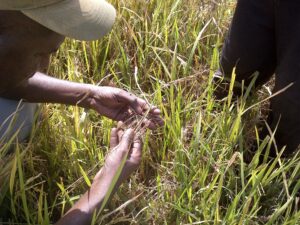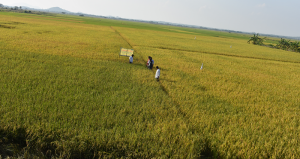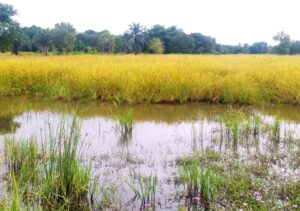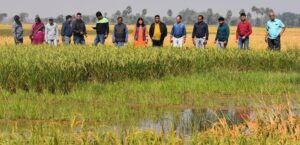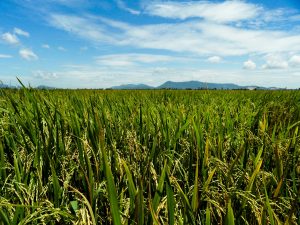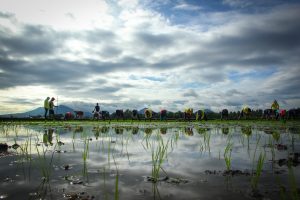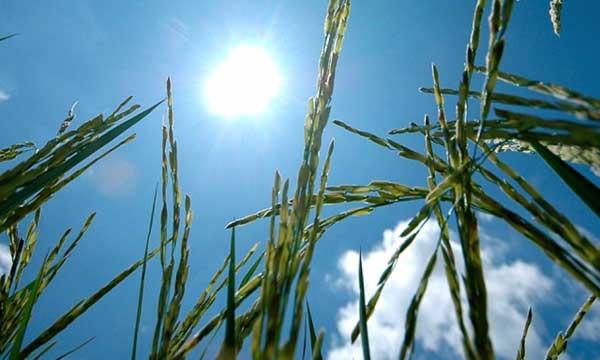
Rice thrives in hot and dry to humid climates. However, extreme heat episodes can irreversibly damage rice yield, grain quality, and plant processes such as germination and fertilization.
Rice is highly susceptible to heat stress, particularly during the reproductive and ripening stages. Extremely high temperatures, even for a few hours, during flowering can cause complete sterility, while high temperatures during ripening can lead to reduced grain filling and poor milling quality (i.e., more broken grains). And, in combination with other constraints such as lack of water, canopy temperatures can increase even further.
Unfortunately, hot days and warmer nights have increased recently. Higher night-time temperatures, in particular, have reduced rice yields—by as much as 10% for every 1 oC increase in minimum temperature. In 2003, heat stress affected about 3 million hectares of rice, resulting in losses of 5.18 million tons in the Yangtze River Valley in China. In 2010, extreme nighttime air temperatures adversely affected the milling quality of rice grown in Arkansas in the U.S.
Changing cropping systems and management are strategies to meet the increasing demand for rice in areas prone to heat stress. This means that farmers may need to adjust planting dates, change crop rotations, and use varieties with shorter maturity to avoid high-temperature periods. Researchers therefore seek to introduce new rice varieties with improved heat tolerance.
To identify hotspots for daytime and nighttime heat stress, we compared daily maximum and minimum temperatures during critical rice growth stages from 1983 to 2011 against temperature thresholds obtained from published literature (click Fig. 1, below, to enlarge).

Our preliminary analysis shows that many rice areas in mainland Asia and parts of western Africa have been experiencing frequent heat stress events over the past three decades. (See Fig. 2 below, click to enlarge). Spatial assessments of rice areas that are vulnerable to heat stress are important for planning and targeting appropriate adaptation and mitigation strategies to ensure food security.

______________________________________________________________________________
Drs. Laborte, Sparks, and Ye are postdoctoral fellows; Dr. Jagadish is a plant pathologist; Mr. Aunario is a specialist on geospatial programming; and Dr. Redoña is a plant breeder, all working at IRRI.

